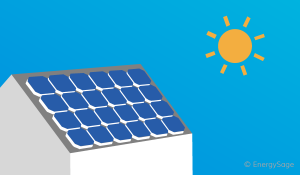Africa is often considered and referred to as the “Sun continent” or the continent where the Sun’s influence is the greatest. According to the “World Sunshine Map”, Africa receives many more hours of bright sunshine during the course of the year than any other continent of the Earth and many of the sunniest places on the planet lie here This has also been. recognised by the international council of science who confidently pointed out that Africa has the best resources when it comes to solar power availability. This resource is usually measured in form of solar irradiance.
So what is Solar Irradiance?
Solar Irradiance is the amount of electromagnetic radiation received from the sun per unit area (usually square meters). In other words, it’s the amount of the sun’s power detected by a measuring instrument. When these data are integrated over time, the information is called solar irradiation, insolation, or solar exposure. The amount of solar irradiance varies depending on how far the object is from the sun, the angle of the sun, and the solar cycle—the change in the sun’s appearance and activity every 11 years. Irradiance can be measured for the moon, stars, or any other glowing object.
Solar irradiation figures are used to plan the deployment of solar power systems. In many countries, the figures can be obtained from an insolation map or from insolation tables that reflect data over the prior 30–50 years. Different solar power technologies are able to use different components of the total irradiation. Because solar collectors panels are almost always mounted at an angle towards the sun, insolation must be adjusted to prevent estimates that are inaccurately low for different seasons. Photovoltaic panels are rated under standard conditions to determine the Wp (watt peak) rating which can then be used with insolation to determine the expected output, adjusted by factors such as tilt, tracking, and shading (which can be included to create the installed Wp rating).
In Nigeria, Insolation values range from 1168 in the Delta Region of the South to 1753 kWh/(kWp•y) in the North according to Solar GIS. With this in mind, Nigeria can overcome the hurdle of the lack of infrastructure and leapfrog its desires for industrialization by taking advantage of this free resource.





